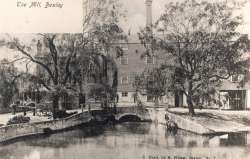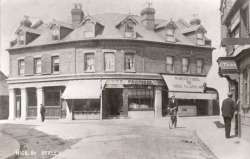History of Bexley Village
This area centres on Bexley Village, the heart of the ancient parish of Bexley. At one time the parish covered a huge area, stretching out towards Lamorbey to the west, Crayford to the east and Bostall to the north.
But the area is now drastically reduced, largely due to the expansion of Bexleyheath, and is primarily covered by 1930s housing estates built by firms such as New Ideal Homes and DC Bowyers. However, earlier building and development can still be seen, particularly in the village itself, which has retained a ‘village feel’ and contains several buildings of historical interest, including the ancient manor house, High Street House, the Styleman’s Almshouses and the Parish Church of St. Mary’s.
Outside the village, Hall Place is a Tudor/Jacobean house set in extensive grounds. It was once the manor house for the area. Up until the late 1930s, the area around Bexley was predominantly a rural farming community, with market gardening and the growing of arable crops the main commercial activities. Business was stimulated in 1866 by the arrival of the railway, which enabled produce to be transported quickly to the London markets.
The largest estate development of the Victorian period was the Parkhurst/Knoll Road estate on the western edge of the village, built during the 1880s. The sales catalogues published at the time show that it was aimed specifically at city commuters.
In the late 1930s Bexley Urban District Council (UDC) acquired part of the Halcot and Hall Place Estates for house building to the north of Bourne Road.
Just before the Second World War Bexley was consumed by London’s urban sprawl and today the village stands on the very edge of London’s metropolitan area, bordering the county of Kent.







